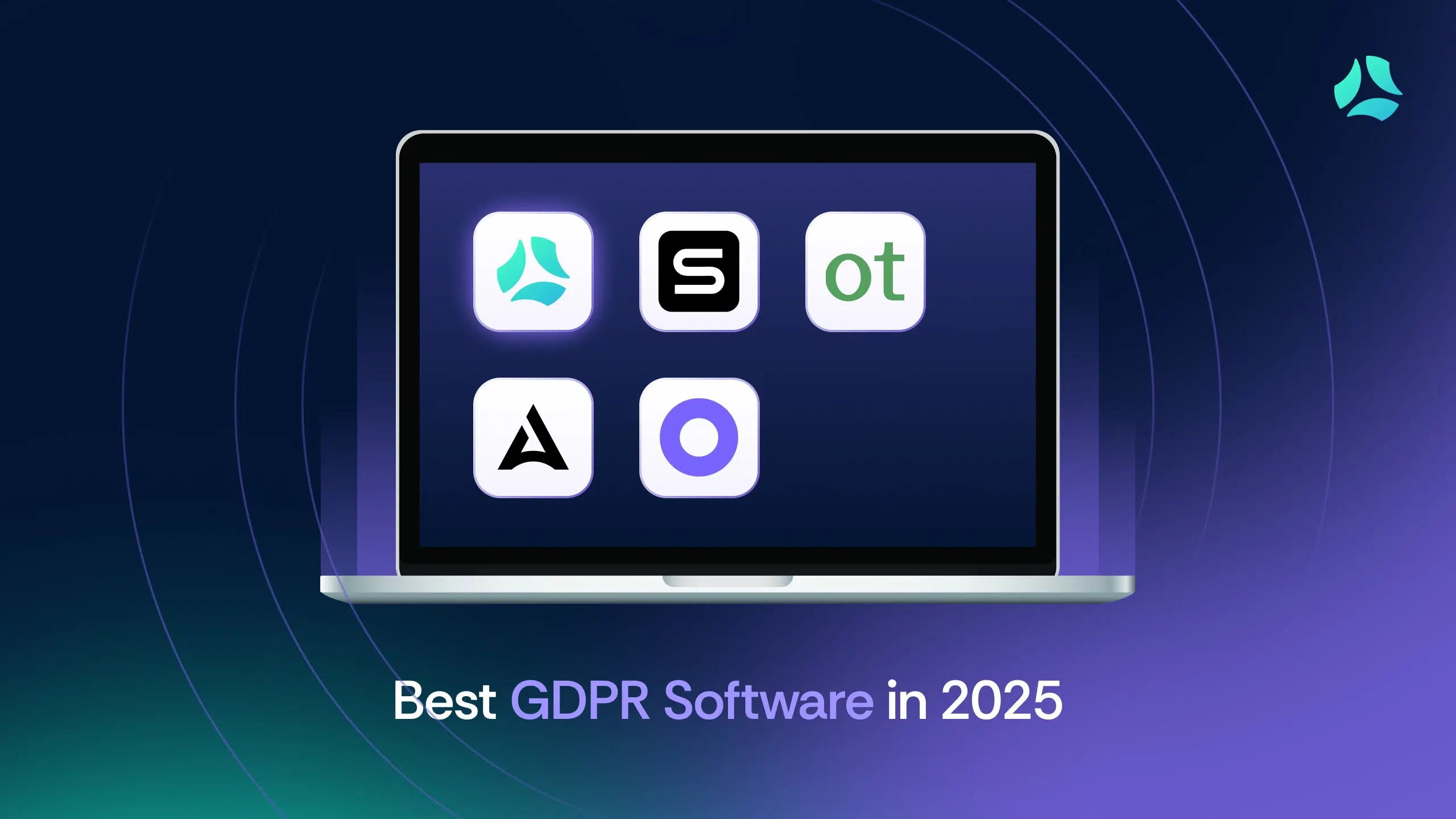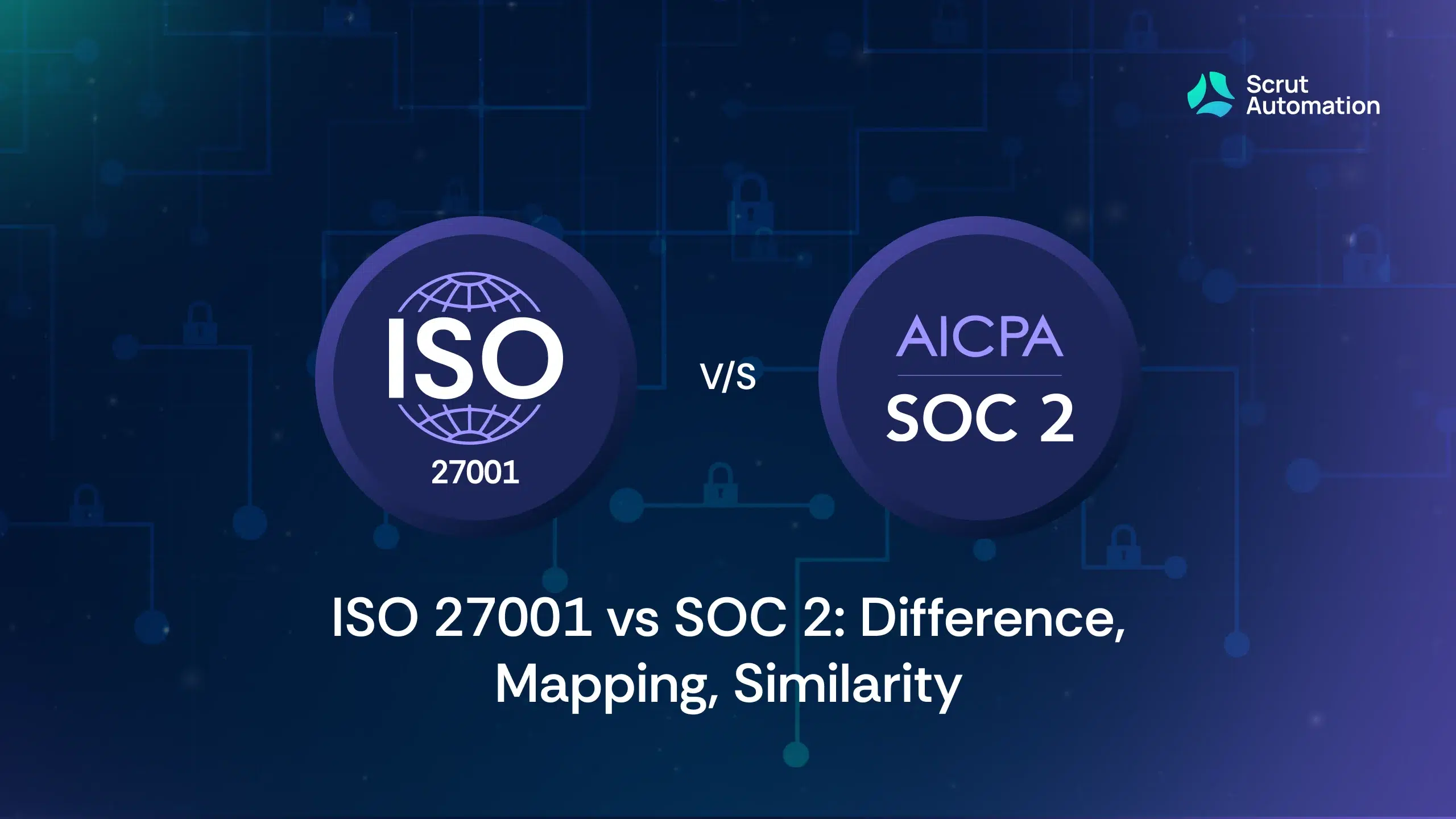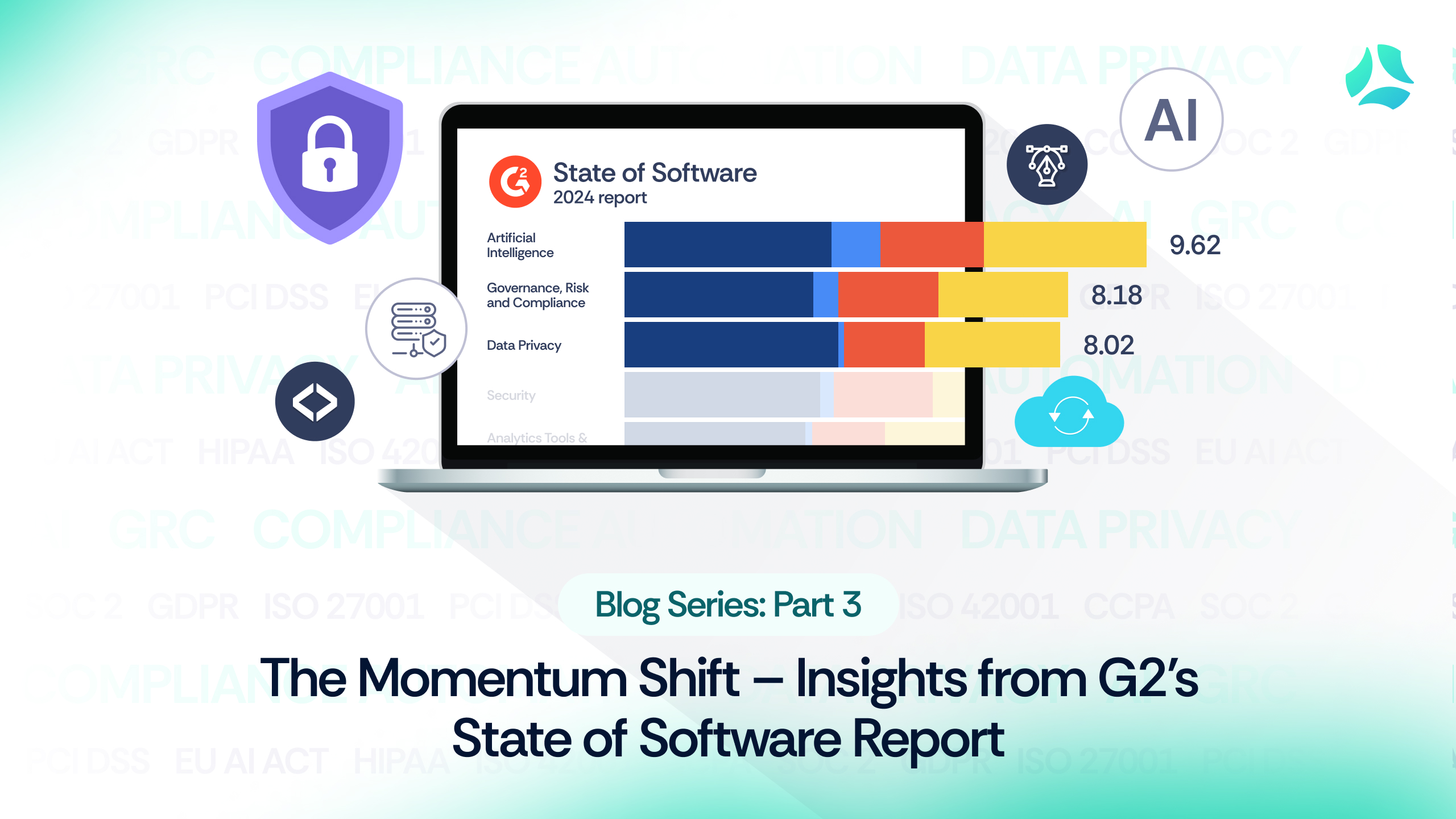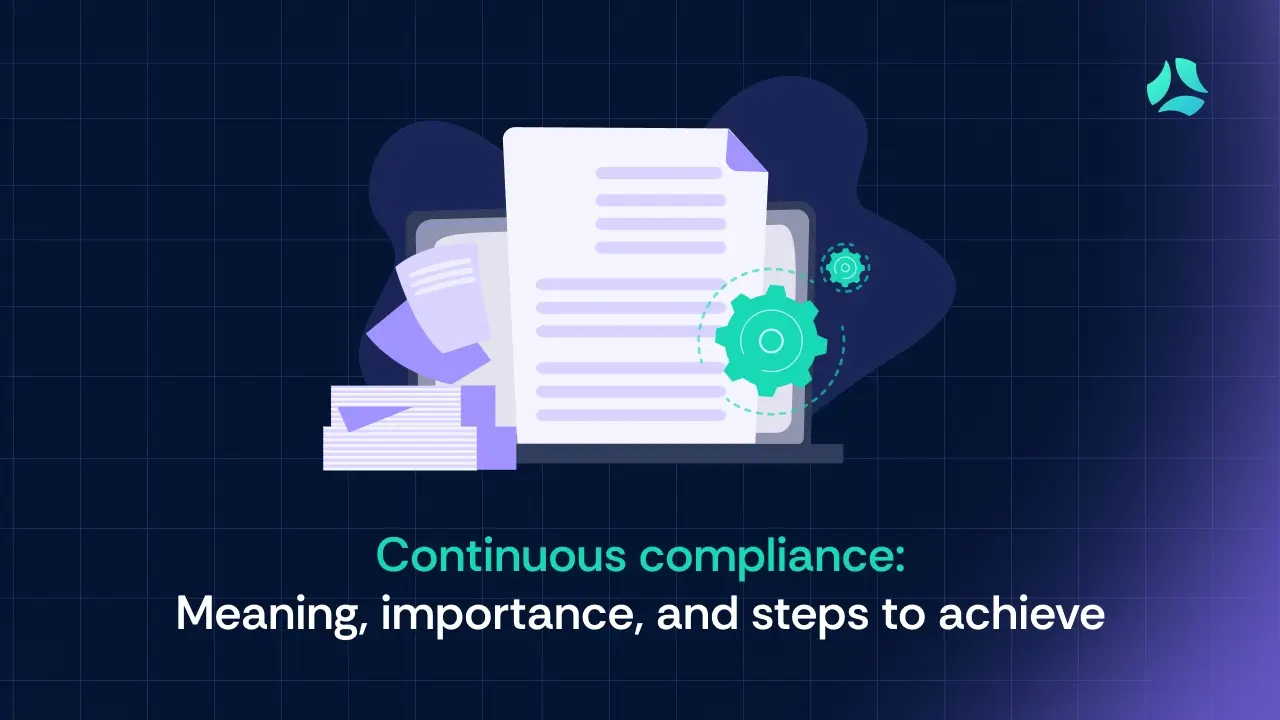Avoid €20M compliance mistakes by choosing the right software
With GDPR fines surpassing €20M or 4% of global revenue for non-compliance, businesses can’t afford missteps in data protection. Yet, 68% of organizations struggle to navigate evolving regulations and software claims, leaving them vulnerable to breaches and penalties.
Choosing the right GDPR tool isn’t just about avoiding fines—it’s about seamless integration, cost efficiency, and future-proofing compliance across regions.
This guide cuts through the noise, offering a roadmap to evaluate software based on real-world needs: key features, vendor credibility, and scalability. Discover how to sidestep risks, simplify compliance, and protect your reputation.
What features your GDPR compliance software must have?
Choosing GDPR compliance software is about minimizing legal risk, streamlining workflows, and ensuring ongoing compliance without excessive manual effort.
83% of risk and compliance professionals said that keeping their organization compliant with all relevant laws, policies, and regulations was an essential consideration in its decision-making processes. Here are the essential features every GDPR compliance software should have.
1. Pre-built GDPR policy templates
Developing GDPR-compliant policies from scratch is both complex and time-consuming. To avoid inconsistency and potential legal risks, you should have pre-built, customizable policy templates for security, data processing, and privacy compliance at your disposal. By automating enforcement across systems, you not only save time during policy creation but also ensure ongoing adherence to legal requirements while minimizing the risk of violations.
For instance, instead of drafting a data processing agreement (DPA) from scratch, businesses can use a template, customize it, and enforce it across vendors instantly. According to a Gartner report, companies that adopt pre-built compliance frameworks reduce policy implementation time by up to 50% compared to those writing policies manually. Such templates facilitate faster policy implementation, consistent compliance across teams, and reduced legal risks.
Companies might face compliance delays and high legal consultation costs if they miss out on this feature.
2. Automated compliance workflows
Manual tracking of compliance tasks can lead to missed deadlines, so automating workflows is essential. By assigning tasks, sending timely reminders, and tracking progress seamlessly, the risk of oversight is reduced. Additionally, automating data subject access requests (DSARs) streamlines the processing of user data enquiries. For GDPR audits, automated workflows assign tasks to the right employees, send deadline reminders, and track status, ensuring all documents are ready. For example, Scrut automates the following workflows:
– Recurring policy reviews
- – Sending instant alerts to approvers or reviewers
- – Regular monitoring of compliant tests (covering cloud, applications and documentation)
- – Cross-mapping progress from ISO and SOC for lesser effort in kickstarting GDPR
- – Collection of evidence in the desired format on a recurring basis
- – Running security training
Eventually, this results in faster GDPR request handling, efficient team collaboration, and fewer compliance bottlenecks. If your GDPR-compliant software lacks this feature, it may result in manual tracking, leading to delays in DSAR responses and GDPR readiness.
3. Automated evidence collection for audits
Manually gathering compliance evidence is time-consuming and error-prone. This feature helps integrate with cloud services to automatically pull compliance evidence, ensuring real-time documentation.
Instead of manually collecting encryption compliance reports from the connected application/platform in your tech stack, the system automatically pulls relevant security evidence and maps it to GDPR controls.
65% of corporate risk and compliance professionals said using technology to streamline and automate manual processes would help reduce the complexity and cost of risk and compliance. This results in faster, stress-free audits, consistent compliance records, and reduced administrative burden.
4. Vendor risk and third-party compliance monitoring
Third-party vendors handling personal data must comply with GDPR, or businesses face significant liability risks. This feature continuously monitors vendor security posture and conducts automated risk assessments to ensure third-party compliance.
By reducing third-party compliance risks, it provides a centralized vendor compliance dashboard and ensures GDPR requirements are met across all vendors. For example, if a vendor processing customer data fails a GDPR compliance check, the system flags the issue, assesses risks, and suggests remediation actions.
The outcome is stronger third-party risk management, fewer compliance violations, and reduced liability. Without this feature, businesses risk non-compliance due to third-party data breaches.
5. Continuous compliance monitoring
Periodic compliance checks leave businesses vulnerable to undetected risks, making continuous monitoring essential. Businesses are seeing the value of continuous monitoring as the use of AI compliance monitoring grew from 20% to 38% year over year from 2023 to 2024.
Continuous monitoring can be integrated into automated compliance workflows for the proactive detection of security risks and compliance gaps. For instance, if an unauthorized tool accesses customer data, the system immediately detects the breach and sends alerts to investigate it, thus preventing its escalation.
Automated workflows can further enhance this process by streamlining several compliance tasks, including:
- Updating policies on a regular basis to reflect the current regulations.
- Sending alerts to users, ensuring timely action on compliance matters.
- Continuous monitoring of cloud environments, applications, and documentation covered.
- Cross-Map the Progress from ISO and SOC.
- Gather and store evidence in the desired form on a recurring basis.
- Ensuring teams do not lack up-to-date knowledge on best practices for compliance.
By adopting these automated workflows, you achieve 24/7 oversight, reduce regulatory risks, and speed up issue resolution, all of which assure you of continuous observance of GDPR. Without an integrated approach, businesses expose themselves to unforeseen compliance violations, fines, and damage to reputation.
Seamless API integrations with enterprise systems
Seamless integration with existing business tools is crucial for effective compliance management without IT disruptions. Having out-of-the-box API integrations with Microsoft 365, Google Workspace, HR platforms, and cloud storage providers, ensures minimal setup and smooth adoption across departments.
By automating compliance within existing systems, it reduces the IT burden and streamlines security enforcement.
The result is easier software adoption, compliance without workflow disruptions, and reduced IT complexity. Without this feature, businesses face manual data transfers, system misalignment, and increased operational inefficiencies.
Access to GDPR compliance experts
Lack of GDPR expertise in-house and difficulty interpreting complicated regulations often result in GDPR compliance errors.
GDPR auditors, security experts, and compliance consultants can provide expert guidance on regulatory compliance on demand. By reducing misinterpretation risks, it helps businesses prepare for audits efficiently and avoid costly mistakes.
For example, if a company needs to conduct a GDPR Data Protection Impact Assessment (DPIA), an expert can review the assessment and suggest improvements to ensure full compliance. The outcome is faster audit completion, fewer compliance errors, and stronger legal protection. Without this feature, businesses risk costly mistakes due to misinterpretation of GDPR laws.
Also read: GDPR for dummies: Strategies for Compliance
Top 5 GDPR compliance automation software: A quick overview
| Product name | Pricing | Key features | G2 rating | Free trial |
| Scrut | Custom Pricing | – Automated Compliance Management – Continuous Cloud Compliance Monitoring – Actionable Dashboard Insights – Collaboration Tools | 4.9/5 | Yes |
| Drata | Custom pricing | – Customizable GDPR control library – Information security policies and incident response – Cross-mapping with ISO 27001, SOC 2 – Vendor risk management | 4.8/5 | Yes |
| Sprinto | Custom pricing | – Consolidate Entities Across Locations – Identify Relevant Privacy Laws – Implement and Manage Security Controls | 4.8/5 | Yes |
| Osano | Custom pricing | – GDPR Cookie Consent – Data Subject Rights – Data Mapping – GDPR Compliance Checklist | 4.6/5 | Yes |
| OneTrust | Custom pricing, higher pricing for premium features | – Data Mapping and Inventory – Vendor Risk Management – Privacy Requests Assessments – Incident and Breach Response | 4.3/5 | Yes |
Top 5 GDPR compliance automation software for 2025: A detailed breakdown
1. Scrut Automation
Scrut Automation simplifies information security and risk management by consolidating over 50 compliance frameworks. It’s particularly valuable for industries like health tech, fintech, and SaaS, automating key security processes.
Scrut stands out by automating up to 70% of compliance tasks, offering daily cloud compliance checks against 230+ CIS benchmarks, and integrating smoothly with development and security tools, making it a powerful tool for efficient compliance management.
The platform offers an intuitive solution for growth-stage companies, featuring automated evidence collection, cloud compliance monitoring, and integrated collaboration tools. These features simplify compliance for security teams and auditors.
Key features
- Automated compliance management: Streamlines compliance activities with 70+ integrations, reducing manual efforts.
- Continuous cloud compliance monitoring: Runs daily security checks to ensure infrastructure adherence to benchmarks.
- Actionable dashboard insights: Offers real-time visibility into compliance status, policies, and risks.
- Workflow customization: Tailored workflows for policies, evidence collection, and risk assessment.
- Integrated incident management: Supports Security Information and Event management (SIEM) and Endpoint Detection & Response (EDR) integrations for better threat detection and response.
- Collaboration tools: Commenting and tagging features enhance teamwork and audit tracking.
- GDPR compliance support: Pre-built policy templates and access to compliance experts for seamless GDPR management.
Pros
- User-friendly and scalable for fast-growing companies.
- Accurate security monitoring with automated alerts and evidence tracking.
- Seamless third-party integrations with tools like GitHub, Azure DevOps, and Slack.
- Proactive customer support with 24×5 availability.
- Affordable pricing with no extra charges for up to 5,000 users.
- Credible audits with partnerships from 25+ global auditors and in-house VAPT experts.
Read also: How to implement a GDPR compliance audit: Checklist and template
Cons
- The comprehensive feature set may be a bit complicated for smaller businesses.
- A lighter version for startups is under development to address this gap.
Ratings
Scrut is recognized as a top compliance solution by Tekpon and has earned 11 momentum leader awards and 257 badges in G2’s Winter 2025 report. It is also listed in the HITRUST Products and Service Directory, highlighting its credibility.
Testimonials
Pricing
Scrut offers custom pricing which includes all essential compliance modules within its base pricing, ensuring affordability for scaling businesses.
2. Drata
Drata enables GDPR compliance by automating workflows and mitigating risks related to personally identifiable information (PII). It helps organizations monitor IT infrastructure, detect incidents, and streamline processes, ensuring audit readiness.
Key features
- Customizable GDPR control library
- Information security policies and incident response
- Cross-mapping with ISO 27001, SOC 2
- Vendor risk management
- Real-time security visibility
- On-demand compliance advice
Pros
- Quick setup and ease of use
- Strong automation for evidence collection
- Instant compliance visibility
Cons
- Readiness score may flag incomplete controls
- Onboarding requires global admin credentials
3. Sprinto
Sprinto offers an effective GDPR compliance solution designed to protect PII. It simplifies the compliance process by helping organizations identify and secure sensitive data, ensuring they stay compliant.
Key features
- Consolidate entities across locations: Streamlines compliance efforts and maintains consistency across all business entities.
- Identify relevant privacy laws: Quickly determines applicable privacy laws, saving time and reducing non-compliance risks.
- Implement and manage security controls: Automates workflows for monitoring sensitive data access, storage, and processing, improving security posture.
Pros
- Easy to use with a unified compliance approach
- Helps organizations maintain consistency across entities
- Strong focus on security and privacy control enforcement
Cons
- Limited details on the extent of integrations with third-party tools
- Could improve with more granular reporting
4. Osano
Osano simplifies GDPR compliance by focusing on data privacy and regulatory adherence. It offers tools that help organizations stay compliant with GDPR and ensure secure personal data handling.
Key Features
- GDPR cookie consent: Automatically adjusts cookie banners to meet GDPR standards, providing users control over data preferences.
- Data mapping: Tracks personal data storage and processing to ensure GDPR compliance.
- GDPR compliance checklist: Provides a step-by-step guide to help identify and address compliance gaps.
Pros
- Simplifies cookie consent management
- Streamlined data subject request handling
- Comprehensive compliance checklist
Cons
- Lacks advanced customization options for larger organizations
- Could improve integration with other compliance tools
5. OneTrust
OneTrust helps organizations manage GDPR compliance through a privacy management platform. It offers tools for data privacy risk management, consent collection, and cookie compliance, making it easier to comply.
Key Features
- Data mapping and inventory: Helps manage access to sensitive data.
- Vendor risk management: Assesses and ensures vendor compliance with GDPR.
- Incident and breach response: Provides modules for handling security incidents and breaches.
Pros
- Efficient automation of compliance assessments
- Visual data flow representation aids GDPR management
- Free trial and version available
Cons
- Slow data discovery
- Limited support for risk treatment
- Higher pricing compared to competitors
Choose a GDPR compliance solution that works for you
A strong GDPR compliance software should reduce manual effort, streamline workflows, and keep your business compliant with minimal friction. Prioritizing these features will ensure you stay audit-ready while reducing risks and compliance costs.
Want to see how automation can transform your compliance strategy? [Book a demo today!]
FAQs
What is GDPR compliance software?
It serves as a safeguard for the rights of users. It ensures that individuals have control over their personal data, granting them the right to access, correct, and even erase their information from SaaS platforms.
How can I get my program to comply with GDPR?
Map out the locations where personal data is processed and stored first. Employ data minimization techniques to gather only the information required, employ consent management tools to monitor user permissions, and implement security measures like encryption. To automate processes, track risks, and produce audit reports to demonstrate compliance, and integrate GDPR compliance software.
What are the 7 GDPR requirements?
- Lawful basis for processing data (e.g., consent or contract)
- Data subject rights (access, deletion, portability)
- Data protection impact assessments for high-risk activities
- Breach notifications within 72 hours
- Data transfers only to GDPR-compliant regions
- Accountability principle (documenting compliance efforts)
- Appointing a Data Protection Officer (DPO) for large-scale processing
What are AI tools for GDPR compliance?
AI tools automate repetitive tasks such as risk assessments, incident management, and data subject request handling. The tools analyze the data processing activities to flag potential risks, including unauthorized data transfers and also optimize data protection impact assessments by saving teams hundreds of hours per year.





